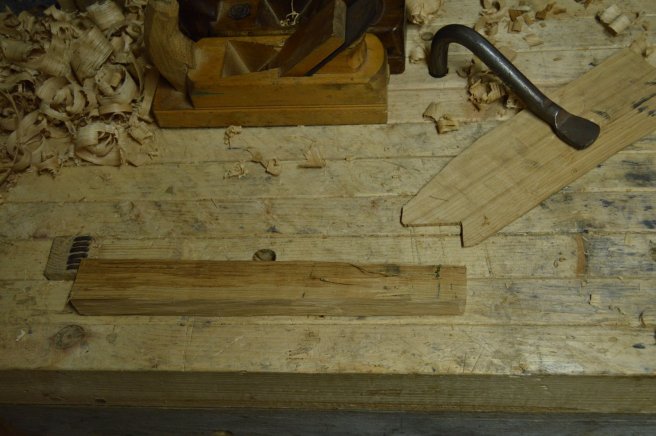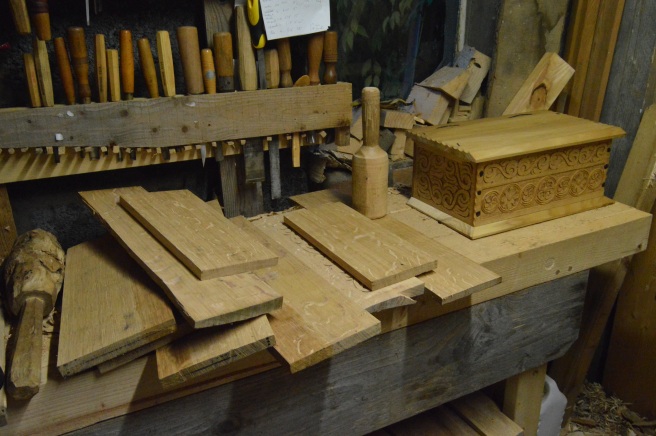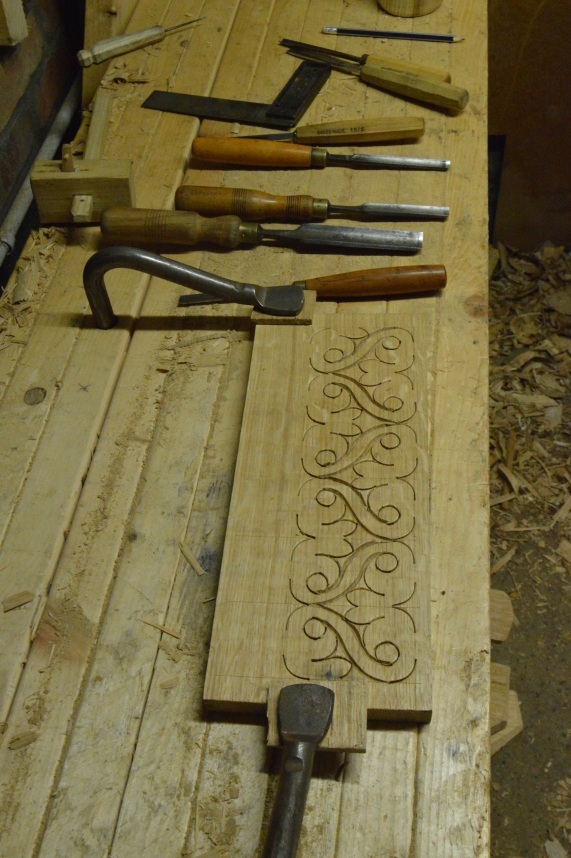Box bits have been cluttering my shed for ages, so I was delighted to finally nail them together and get rid of one of them into the house.
I made a short time lapse of the carving of the box sides, which were lined up side by side. Now that I am familiar with the pattern I will be able to carve all three sides at once. This is very fast and efficient as the chisel cuts in the design repeat very regularly.
Looking at the box the carving stands out as the main element. However, the rest of the construction is very time consuming and fiddly when you’re as disorganised as me. When using wood directly from a split green log there is a lot of work in preparing the stock for each individual plank. Most of the boards in the till were planed down from scrap pieces covered in practice carvings.
The wide sawn pine boards for the lid and base also have to be flattened and their edges shaped. Cleats nailed to the boards help reduce movement in them. In this case they also attach the lid to the box hinges (pegs projecting from the back board). The only holding devices I have on the whole bench are holdfasts and the planning stop. Happening across a Chris Schwarz post, which refers back to an earlier one from Richard Maguire (sorry lads can’t find the links) detailing a kind of wood pincher board, was very well timed and a big help. This little trick essentially removes any vague need I thought I had for a tail vice. I like that my bench is basically a block of wood with some holes in it and I plan to keep it that way until a job absolutely necessitates new bench appendages.

Lastly, photos of the finished box. I rarely try and take good quality pictures of my work so I took a few extra ones of other turned work that was to hand while I was at it.













